Rachelarthur.com.au
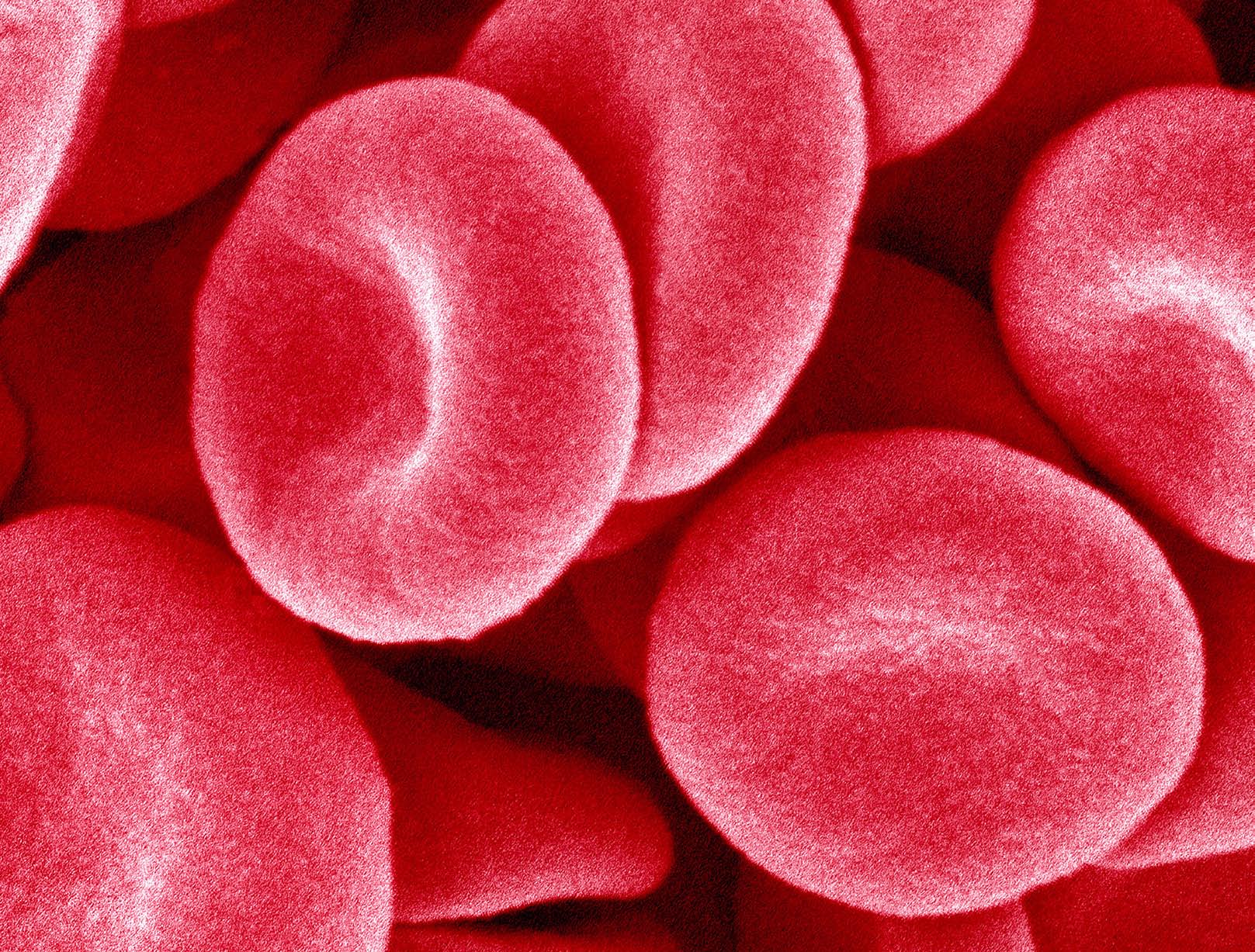
One of the most researched micronutrients, iron still fosters new
discoveries about its homeostasis and physiological role. Rachel Arthur
explains groups at risk of deficiency and supplementation considerations.
Rachel Arthur, BHSc, ND, is a practising naturopath and lecturer in naturopathic nutrition and a research assistant at NatMED Research in the School of Health and Human Sciences, Southern Cross University
The Editor thanks Surinder K Baines, BSc, PhD, GradDipDiet, APD, Lecturer in Nutrition and Dietetics, University of Newcastle, for her kind assistance in the peer review of this article
• Although haem iron exhibits superior bioavailability, per capita red-meat
consumption in Australia has continued to decline, leaving us heavily reliant on the non-haem form
• There are several groups at risk of iron deficiency in Australia, with
third-trimester pregnant women and children from some ethnic minorities exhibiting the highest rates of deficiency
• Although Australian rates of iron-deficiency anaemia (IDA) remain low in
comparison to other countries, a great many more individuals suffer from iron depletion
• The human body exhibits sophisticated regulation of iron levels, including
an extraordinary capacity for recycling iron that is partly protective in those with borderline iron status but may contribute to unhealthy iron accumulation in others
• Hereditary haemochromatosis, estimated to affect 0.33–0.5%8 of
Australians, is a genetic iron-metabolism disorder with a low phenotypic penetrance that can result in increased morbidity and mortality due to unregulated uptake of iron from the GI tract
• Iron supplementation may be beneficial in some children's behavioural
• New research investigating iron supplementation practices, including
forms, dose and dosage regimes, have been substantially revised
36 Complementary Medicine May / june 2007

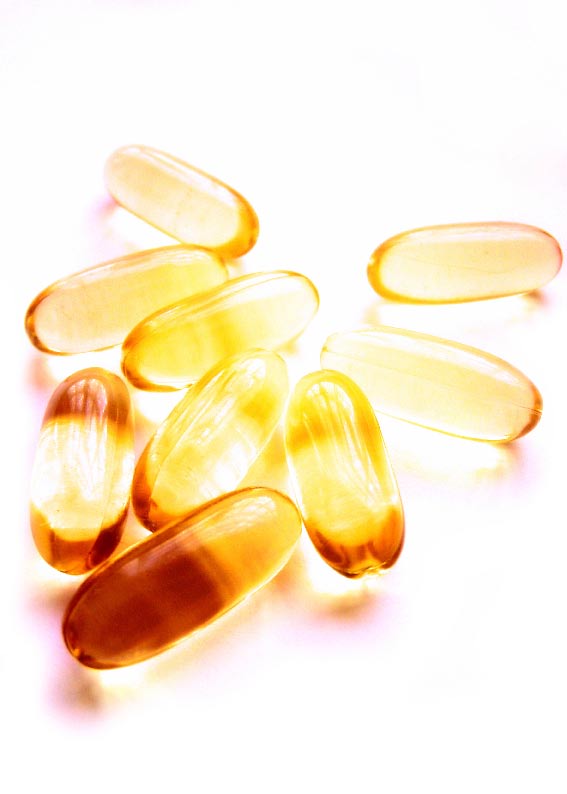
IRON nutrition notes
The last few decades have seen iron Dietary sources of iron9
research develop from the singular
concern of deficiency (chlorosis or
Fe content
anaemia) to an appreciation of its
potential toxicity and the body's
mechanisms for minimising such risks.
Lamb kidneys (130 g)
Lamb liver (130 g)
Dietary sources and
Chicken livers (130 g)
Mussels (12=120 g)
While iron is widely distributed in food,
the average Western diet contains only
Oysters (12=120g)
about 5–7 mg per 1000 kcal.1 There
Soya bean (100 g)
are two types of dietary iron: haem iron
Lamb sirloin chop (100 g)
(hFe) in the form of haemoglobin and
Lean beef sirloin,
myoglobin, the predominant type found
in flesh foods (50–60 per cent), and
Dried figs (4=80 g)
non-haem iron (n-hFe), which is the
Mung beans (100 g)
major form in plant and dairy foods.1,2
Dried peach (25 g)
Iron fortificants added to some cereal
products, yeast extracts and legume-
A smal er study made similar findings and
based meat substitutes3 are n-hFe and can identified fortified breakfast cereals alone
be any number of iron salts (e.g. ferrous
as contributing a staggering 15 per cent of
fumarate, ferrous lactate, reduced iron)
total daily iron in both omnivorous and
with elemental amounts restricted to
vegetarian women.7 While the fractional
<3.5 mg per serve.3
absorption of iron fortificants vary, they are
Iron bioavailability is dependent
reported to provide ≤0.33 mg per 100 g11
upon the form found in food, with
of product consumed. Improved outcomes
hFe providing the highest absorbable
of iron fortification are hampered by
percentage (20–30 per cent4,5). Non-haem the insolubility of metal ic iron and the
iron bioavailability varies dramatical y
negative interactions between soluble
(2–20 per cent), dependent upon a range
iron compounds and the food matrix
of extrinsic factors6,7 [see ‘Dietary and
in terms of palatability, shelf life, etc.4
digestive factors affecting iron absorption' Another consideration is the potential
table, p 38]. Consequently, flesh foods
interaction between the fortificant and
are considered preferable sources of iron,
components of the whole meal. With
including highly concentrated examples
breakfast cereals a key source of dietary
such as offal and clams.8,9 The Australian
iron7,12, consumption with milk1 may
diet, however, typical y has a hFe:n-
reduce their absorbable iron content. See
hFe of about 1:12.4, and these specific
‘Dietary sources of iron' table, above.
foods are not commonly consumed.7 In
fact, Australian meat consumption has
declined significantly since the 1970s,
The absorption and bioavailability of iron is
coupled with a smal increase in per capita
dichotomous as a consequence of its major
vegetable consumption.10
dietary presentations as hFe or n-hFe.
The major dietary sources of iron
Each form undertakes distinct pathways
consumed by Australians in 1998 were
of digestion and absorption and is subject
cereal and cereal products (40 per cent),
to contrasting degrees of regulation12 [see
fol owed by meat (17–22 per cent) and
‘Regulation of haem and non-haem iron
fruits and vegetables (about12 per cent).8
through alterations in uptake' table, p 40].
May / june 2007 Complementary Medicine
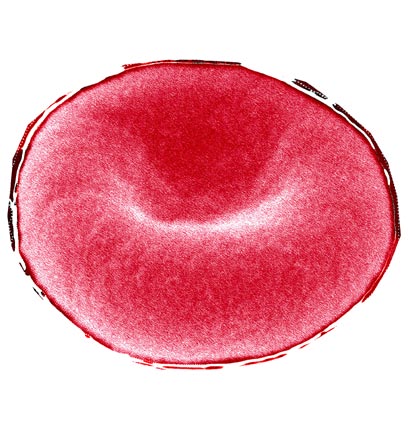
nutrition notes IRON
Dietary and digestive factors affecting iron absorption
Type of Fe affected Mechanism
Acids e.g. ascorbic, n-hFe
Act as reducing agents to produce
Consumption of 75 mg vitamin C (e.g. ½ glass orange
citric, lactic, malic
Fe2+ and form a chelate, increasing
juice or 1 medium kiwi fruit) maximises bioavailability of
and tartaric 2,16,17
solubility in small intestine
Fe (e.g. from 2% to 8%)1
Digestion of contractile proteins
Consuming 75 g cooked meat with iron-rich vegetables
e.g. meat, poultry
produces cysteine-containing peptides will maximise absorption of n-hFe in both (from 2% to
enhance absorption and fish
that form bioavailable chelates and
stimulate intestinal secretions that may further ↑ uptake
Acidic environment required to
Foods and supplements that may help maintain a low pH
reduce Fe3+ to more bioavailable
in the stomach (e.g. lemon juice, apple cider vinegar) may
Fe2+ or to maintain solubility as Fe3+
enhance absorption. Hypo- and achlorhydria have been implicated in Fe deficiency
Polyphenols form non-absorbable
If tea or coffee are consumed during or within an hour
e.g. tea, coffee,
complexes with Fe within intestinal
of a n-hFe meal/supplement, n-hFe absorption can be
↓ ≥60%.12 This is dose-dependent and may be only of
inhibit absorption
significance in those already at risk19
Oxalates readily bind n-hFe to form an Despite high iron content, spinach, parsley and other
e.g. tea, spinach,
insoluble chelate
high-oxalate foods do not represent good sources of
parsley, rhubarb,
chocolatePhytates
Phytates bind with n-hFe to form
Fermentation of grains or sprouting of legumes will
e.g. whole-grains
insoluble chelates, increased ingestion increase Fe bioavailability from these foods
of Fe will not overcome this effect1,16
Competition for shared transporters, Consuming n-hFe with milk or a Ca supplement (providing
inhibition of basolateral transfer12
≥300 mg elemental Ca) can reduce Fe absorption by
or formation of insoluble chelates
70%.1 This partly explains the higher deficiency rates
mean that high consumption of these evident in children who consume a high-dairy diet.13–15 One
nutrients can ↓ Fe absorption and vice small study did not demonstrate impaired Fe absorption,
however, both sample size and amount of Ca were small12
Haem iron is a metal oporphyrin found
hydroxide compound. Fe3+ can undergo
Distribution, storage, recycling
in flesh foods (e.g. haemoglobin and
reduction within the intestinal lumen to
and ‘excretion'
myoglobin). Digestion of this molecule
facilitate uptake or bind to solubilising
Transferrin carries almost al of the
is complete fol owing hydrolysis of the
chelators in order to overcome this.1
absorbed and recycled iron around the
globin portion, the haem porphyrin ring
The overal contribution of Fe3+ to
body and is typical y one-third saturated
absorbed intact. This means free iron does
absorbable iron, while not ful y quantified, with iron.1,16 Due to the bone marrow's
not dissociate at any stage within the lumen is speculated to be smal .2 Fe2+, however,
high erythropoietic iron demand,
and therefore is resistant to unfavourable
when favourably chelated, is released and
70–90 per cent is delivered here, facilitated
chelation. Although the mechanism is yet
readily absorbed across the brush border
through transferrin receptors found on the
to be completely elucidated, it appears
by protein-carrier transporters, including
plasma membrane.16 The amount of iron
largely impervious to the regulatory
the divalent cation or mineral transporter
taken up by cel s is influenced by transferrin
influences affecting the protein carriers
1 (DMT1). Despite this, fractional
saturation, with higher iron content
responsible for n-hFe uptake.
absorption of n-hFe remains relatively low promoting increased uptake and the cel s'
In contrast to this, n-hFe is released
in most instances, principal y the result
receptor numbers, which in turn is directly
from food producing either ferrous (Fe2+) of interactions between n-hFe, negative
proportionate to the cel s' iron demand.
or predominantly ferric (Fe3+) ions. As
chelating agents and other antagonistic
The liver parenchyma is the primary
Fe3+, the iron is soluble only in an acidic
competitors such as divalent cations1,13–15
iron storage site (about 60 per cent).
environment and, upon mixing with
co-presenting in the GI tract [see ‘Dietary
The remaining 40 per cent occurs in the
the alkaline secretions of the pancreas,
and digestive factors affecting iron
reticuloendothelial cel s (RE) of liver,
commonly forms the insoluble ferric
absorption' table, above].
spleen, bone marrow and possibly between
38 Complementary Medicine May / june 2007
IRON nutrition notes
May / june 2007 Complementary Medicine
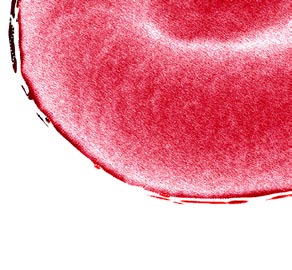
nutrition notes IRON
muscle fibres.1 The main storage form
the tissues, with amounts sufficient to
which then inhibits iron recycling in
is ferritin, a dynamic molecule which
meet any shortfal in intake. Excluding
macrophages. This can cause a substantial
is constantly undergoing synthesis and
menstruating females, there are no actual
(about 30 per cent) drop in serum iron
degradation, providing an intracel ular pool excretory pathways for iron22 and losses
and, if continued long term, results in
of available iron. Ferritin levels correlate
in healthy people remain extremely low.
the anaemia of chronic disease.16,22 This
directly with the amount of iron stored
The little iron that is lost occurs primarily
is believed to be an important part of the
and, consequently, are used as a first-line
in the GIT via minute blood loss, bile
acute-phase response, limiting the use of
indicator of iron status.12,17 Release of
products and desquamated mucosal cel s.1 iron by invading pathogens.1,16,22
iron from ferritin requires reduction of
Other sources of iron loss include the skin
Fe3+ via reducing agents (e.g. vitamin C,
(through cel sloughing) and urine. Urine
Deficiency prevalence
riboflavin, niacin and possibly sulphide).2
concentrations should remain low due
Estimates of worldwide prevalence
When the iron-binding capacity of ferritin
to the large size of most iron-containing
of iron deficiency vary, with figures
is exceeded, as in iron overload, iron
molecules, which prevent glomerular
ranging from 700 mil ion to two bil ion,
binds to haemosiderin. Healthy iron
filtration except in renal pathology.1,2
depending on definitions and cut-off
stores for males, which peak in their 30s
points used.4,32,33 Australian research
to 40s, are 50 mg/kg, while women have
Homeostasis/regulation of levels
confirms the significance of this issue
less due to both smal er body size and
Iron absorption, in particular n-hFe,
and identifies at-risk groups similar to
altered iron status as a result of pregnancy
increases with low iron status and
most countries. Rates of IDA (overt iron-
and menstruation. Women's peak
decreases in replete individuals.1,8 The
deficiency anaemia) have been reported
concentrations occur at the age of 60.2,20,21
GIT is considered to be the primary site
to be at most five per cent in children
The human body possesses an
for overal iron regulation. In spite of this,
aged between six months and five years
extraordinary recycling capacity for iron,
iron deficiency is common, therefore this
in Australia and New Zealand34–36, with
with about 40–60 per cent of iron salvaged
adaptation is not absolute.20 The evidence
evidence of increased prevalence in some
from the degradation of ferritin and
points to three key regulators of Fe
ethnic minorities.13,37,38 It is important to
haemoglobin being reused for haemoglobin absorption: stores, erythropoietic demand remember, however, that rates of IDA,
synthesis within 12 days, and the remainder and dietary intake23 [see ‘Regulation of
the end-stage deficiency, present an over-
entering storage.2,16 For haemoglobin, this
haem and non-haem through alterations
simplified view of the problem because
occurs in the RE system of phagocytes
in uptake' table, below].
they don't take into account individuals
of the liver, bone marrow and spleen
Another important player in iron
exhibiting iron depletion. When these
and provides about 20–25 mg iron per
metabolism is inflammation. Inflammatory figures are combined, the true magnitude
day1, while ferritin breakdown occurs in
stimuli rapidly trigger hepcidin release,
of the problem becomes apparent. For
Regulation of hFe and n-hFe iron through alterations in uptake7,9,13,14,30
Type of Fe
Key regulator secreted by bone marrow and liver, whose release is triggered by
hFe and n-hFe. The absorption of
high Fe stores and inflammation. In response to elevated hepcidin, enterocytes
both hFe and n-hFe are affected
stimulate degradation of ferroportin and therefore inhibit Fe efflux into portal
by body stores. However, n-hFe
blood. Conversely, when hepcidin levels ↓ as a result of anaemia or hypoxemia,
shows the greatest adaptive
together with low cellular Fe uptake, the same transport proteins can be
response (10–15-fold vs. 2–3-
upregulated within 24–48 hours. May also ↓ DMIT1 expression
Fe-rich meal and ↑
A bolus of Fe enterally administered results in enterocyte resistance to
Fe concentration in
additional absorption for several days. This trapped Fe is then lost with the
rapid turnover of mucosal cells (2–3 days). There is additional evidence of redistribution and ↓ expression of DMIT1
Aconitase hydratase and
Detects ↓ cytosolic concentration and binds to Fe-responsive elements (IRE)
hFe and n-hFe. n-hFe is affected
of ferritin, ferroportin and transferrin genes to increase storage, impair the
to a larger extent
transfer of iron across the basolateral membrane of the enterocyte and slow the transfer of iron from the GIT and from Fe stores
Unknown erythropoietic
When the erythropoietic drive is high in relation to Fe supply, Fe absorption ↓.
Mediated potentially through increasing transferrin receptors
40 Complementary Medicine May / june 2007
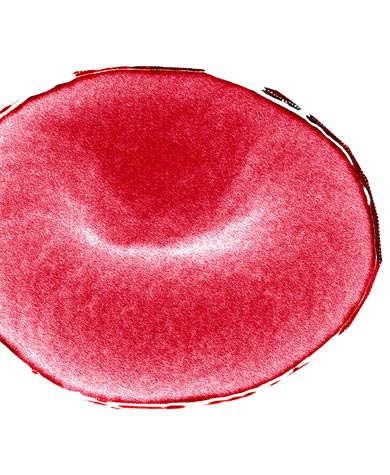


Key interactions54
Fe ↓ drug absorption
• ACE inhibitors
Separate doses by ≥2 hours
• Cimetidine• L–dopa and carbidopa• Quinoline antibiotics• Thyroxine
Drug ↓ Fe absorption
Separate doses by ≥2 hours and monitor Fe levels
• Cholestyramine, colestipol• H2-receptor antagonists• Proton pump inhibitors
↓ Fe and ↓ drug absorption
• Penicillamine
Separate doses by ≥2 hours
• Sulfasalazine
• Tetracylcines
↓ Fe levels independent of
Increased iron intake may be
required during long term treatment
Additive pharmacological effect • Erythropoietin
Beneficial interaction possible
example, in one study of six- to 24-
the adaptation was not sufficient for those
month-old children in New Zealand, 4.3
with low iron stores.39
per cent of the sample were found to be
Australian male40 and female7 lacto-
anaemic, while an additional 33.5 per cent ovo-vegetarians and vegans demonstrate
were diagnosed as either iron deficient or
significantly lower ferritin levels and
having low iron stores, bringing the real
higher rates of iron depletion than their
figure to 37.8 per cent.34
omnivorous counterparts, in spite of
higher iron intakes. Surprisingly, rates of
Vegetarians and vegans
anaemia do not differ in women.7
Exclusive consumption of n-hFe results
in an overal iron bioavailability of 10
per cent compared to 18 per cent for
Iron deficiency is most prevalent
an omnivorous diet. This suggests that
worldwide in preschool-aged
vegetarians would need to consume
children.4,11,16,36,41 This apparent
80 per cent more n-hFe, increasing
susceptibility is multifactorial, including
total daily requirements from 8 mg
the rapid growth evident in the first
in men and 18 mg in women to 14.4
year, depletion of maternal and infant
mg and 32.4 mg respectively.1,16,17
iron stores at six months post-partum28
There is evidence, however, of long-
and the low bioavailable iron content of
term adaptation to diets with low Fe
most complementary foods.23,42,43 The
bioavailability and, accordingly, some
only national survey investigating rates
researchers argue that these figures are
of IDA reported an incidence of 2–3.3
probably an overestimation.21 Although
per cent among preschoolers36, peaking
studies have demonstrated increased
among two-year-olds.35 However,
n-hFe absorption fol owing long-term
the reported percentages affected by
(10-week) consumption of a vegetarian
suboptimal iron in Australian and New
diet by men, later studies in women found Zealand range from 14.4 per cent35 to
March / april 2007 Complementary Medicine
nutrition notes IRON
40 per cent.34 These figures increase
bioavailability.1,14,17 Australian data
The demonstrated negative relationship
again within several subgroups:
indicate that about two per cent of
between excess dairy consumption and
• low birth-weight and premature
children are vegetarians45
poor iron status is controversial but has
infants due to inadequate gestational
• over-reliance on milk and milk
attracted a number of explanations, such as
iron accrual33,44
products (≥650 mL/day) in children
milk's poor iron content and substitution
• prolonged exclusive breastfeeding23,44
>12 months13,14,37,46
for other iron-rich foods, calcium's potential
• consumption of meat less than four
• Aboriginal children in rural but not
to inhibit iron uptake and possible
microscopic GIT blood loss.14
• young vegetarian children with
• recent maternal immigration47
a reduced stomach capacity,
potential y associated with inadequate
Adolescent girls48
preventing the 80 per cent increase
maternal iron, poverty, reduced food
A rapid growth spurt, together with
in iron-containing foods necessary
diversity and subsequent over-reliance
menarche and a trend for declining red-
to compensate for reduced iron
on cow's milk.13,44
meat consumption in this age group,
increase the likelihood of a shortfall
Hereditary haemochromatosis – when Fe regulation goes wrong
between requirements and intake.49
Hereditary haemochromatosis (HH) is one of a number of genetic iron-metabolism
Additional exacerbating factors include
disorders that particularly affects individuals with northern European, western and
high menstrual losses, strenuous exercise,
southern German or Spanish ancestry. Estimations of the percentage of Australians
frequent blood donation or other sources
with this condition range between about 0.33–0.5%8, increasing to 1.2% of men ≥58
of blood loss (e.g. epistaxis), pregnancy,
years of age.26 HH is a human leukocyte antigen (HLA)-linked autosomal recessive
low socio-economic status and ethnicity.49
disorder caused by a single nucleotide polymorphism in the HFE gene16, with the
While one study estimated that about eight
majority of symptomatic individuals being homozygotes (80–100%).27–29 The loss of
per cent of Australian teenage girls have low
normal HFE protein expression on enterocyte cell membranes results in impaired
iron stores, with a quarter of these suffering
sensing of body iron stores.29 This stimulates increased expression of DMIT1,
IDA14, substantial y higher figures have
increasing GIT iron absorption. A recent discovery has been the partial hepcidin
been reported by other authors (12 per cent
deficiency characteristic of HH and considered to be as central to its pathogenesis
low ferritin and seven per cent IDA).49
as insulin is to diabetes.22,24,29,30 Ultimately, this annuls the ‘stores regulator', producing ongoing increased absorption (≥ x 2)16 in the face of elevated ferritin.
Over time, transferrin and ferritin become saturated22 and excess iron is stored as
A number of contributing factors
haemosiderin, deposited in the liver, heart and endocrine glands, increasing the
merge to place women at an increased
risk of malfunction and damage.6,8 The liver is the primary target and 30% of deaths
risk of iron deficiency. Most notable is
from HH are due to hepatocellular carcinoma.6,29
menstrual blood loss (30 to >80 mL per
Individuals can also be heterozygous for HH, with an incidence approximating
cycle)1, 50 equivalent to about 13.5–36
10% of Americans.6 Heterozygotes, although potentially displaying abnormal iron
mg per month.2 Such direct iron loss
status, don't demonstrate the same upregulation of iron absorption28 or develop
is exacerbated in IUD users5,50 who
organ failure.1 Even HH homozygotes are typically asymptomatic due to the
experience 30–50 per cent greater blood
low penetrance of the clinical phenotype. Only 60% of homozygotes eventually
loss, and is moderated in women on oral
develop iron overload27, and results from a large American study suggest that
contraception. In addition to this, women
<1% develop frank haemochromatosis, although this remains controversial.16
demonstrate a number of dietary patterns
Clinical features of HH may take decades to appear, typically presenting midlife,
that also compromise intake, consuming
and show substantial inter-individual variation. Most notably, the age of onset is
less overal iron than men each day (11.1
delayed in females and regular blood donors, and accelerated in patients with
mg vs. 15.2 mg)8, as wel as a reduced hFe:
existing comorbidities, e.g. viral hepatitis.6,31
n-hFe.8 Restricted calorie consumption
While restriction of both dietary Fe and supplemental vitamin C and tea
may also play a part.14 The Australian
consumption to impair iron uptake is a sensible first step in the management of
Longitudinal Study of Women's Health
HH, those homozygotes with high ferritin +/- increased transferrin saturation
estimates that one in three women have
should have regular venesection. If undertaken prior to the development of
been diagnosed with iron deficiency by the
cirrhosis, this can reduce morbidity and mortality.27,29
age of 45–50.51 Other than vegetarianism,
risk factors for women include:
42 Complementary Medicine May / june 2007
IRON nutrition notes
• multiparity — risk is increased with
Features of acute and chronic iron deficiency1,4,5,15,16,59
parity, with a threefold greater risk
Acute deficiency (early indicators)
Chronic deficiency (late indicators)
for those women with two or three
children and almost four times greater
• Listlessness, fatigue and lethargy
• Microcytic hypochromic anaemia
• Pallor of mucous membranes
• Pale blue sclera
risk for those with four or more50;
• Koilonchyia (spoon-shaped nails)
• regular strenuous exercise — long-
• Angular stomatitis
• Slow tooth growth
distance running in particular is
• Reversible gastric atrophy
• Poor tooth integrity with increased caries
associated with increased iron losses
• Increased susceptibility to infection
• Salivary gland dysfunction
through sweat, faeces and intravascular
• Increased lead absorption
• Irreversible learning impairment in children
• Delayed psychomotor development in
• Increased maternal morbidity, premature
haemolysis (namely footstrike), as well
infants and children
labour and LBW babies
as a dilutional pseudoanaemia.52–54
• Impaired work performance and productivity • Oesophageal webbing (Plummer-Vinson
Together, these produce a 20 per cent
faster rate of whole-body iron loss in
• Pica: geophagia (dirt) and pagophagia (ice)
• Exertional dyspnoea
female athletes than in non-athletes.15
• Parasthesias in hands and feet
• Cold extremities
Compounding this is consistent
• Impaired thyroid function
evidence of energy underconsumption
• Diminished menstrual flow
by female athletes, which often results
• Hyperactivity and possibly ADHD
• Night cramps
in compromised iron intake52,53;
• Cardiac bruits
• pregnancy — the total iron cost of
• Cardiomegaly• Cardiac failure
pregnancy is reported to be in the vicinity
• Spleen enlargement
of 700–1400 mg.4,32,55 This is required
for the growth and maintenance of both
gestation (e.g. low birth weight,
fatigue. A diminished oxygen-carrying
foetus and mother, with al owances
premature labour and increased perinatal capacity can result in the pallor often
made for losses at delivery. Increased
mortality) remain controversial.
described as the key clinical feature
requirements begin in the second
of iron deficiency. However, this can
trimester and have increased eightfold by
often be hard to detect in patients of
the third.4 Accordingly, rates of anaemia
Comorbidities associated with increased
varying skin tones and is best observed
fol ow similar step-wise increases, from
blood loss place other individuals at risk
in the mucous membranes57, e.g. inside
about 6.7 per cent in the first trimester to
of a secondary iron deficiency, including
lower eyelid or mouth. Other features
45.6 per cent in the third, indicative of
any form of haemorrhage, renal disease,
are listed in the ‘Features of acute and
the widening gap between demand and
steatorrhoea, some GIT parasite
chronic iron deficiency' table, above.
consumption.50 A comparison between
infestations1, coeliac and IBD and
the current RDI (27 mg/day) and the
menorrhagia.50 In addition to this, factors indications for iron
average dietary intake of iron by Australian
associated with compromised absorption Prevention and treatment of IDA
pregnant women (12 mg/d) makes plain
of iron may also precipitate a secondary
Studies in anaemic children have
the principle cause.56 Some authors state
deficiency, such as protein calorie
demonstrated that ferrous sulphate 300 mg
that unless preconception iron stores are
malnutrition, hypo- or achlorhydria [see
weekly dosing was successful in increasing
≥500 mg, the high iron requirements of
JCM 2007;6(1):55–7], Helicobacter pylori both haemoglobin and IQ.54 Prophylactic
pregnancy necessitate supplementation.4
infections or infestations of certain
iron supplementation (40 mg/d) from 18
This position is supported by a study of
parasites, e.g. hookworm.1
weeks' gestation prevented iron deficiency
over 2000 unsupplemented pregnant
in 90 per cent of women and anaemia
women, whose haemoglobin levels
signs of deficiency
in 95 per cent, and these benefits carried
remained low throughout gestation and at
Early indicators of iron depletion are
through into the post-partum period.59 An
one year postpartum.4 This suggests that
generalised, due partly to the rapid
Australian study found comparable results
iron depletion in pregnancy can have long-
compromise of the Kreb's cycle Fe
with 20 mg/d from 20 weeks' gestation.56
lasting ef ects for the mother.
metalloenzymes and ETC cytochromes,
which are essential to the production of
Fatigue without anaemia
The suggested consequences of
cellular energy. Consequently, patients
Braun and Cohen54 report that iron
inadequate maternal iron during
classically present with listlessness and
supplementation (80 mg/d) is useful for
May / june 2007 Complementary Medicine
nutrition notes IRON
some fatigued women in the absence
patients with confirmed suboptimal
An increasing number of studies show
of abnormal iron studies, reducing
status49, others argue that although more
improved success with low-dose (≤20
fatigue by 29 per cent over four weeks.
slow to correct ferritin levels (at least nine
mg) long-term supplementation (at least
However, this was only true for those
months), dietary treatment of mild iron
six months) in many patients including
with baseline ferritin <50 mcg/L.
deficiency is preferable.51 This argument is children and pregnant women.33,56,67
convincing because dietary modification
Certain clinical situations necessitate
may also prevent subsequent IDA through parenteral administration, including:4
Iron has attracted attention as a potential
addressing dietary causes. Additional y,
• impaired iron absorption
contributor in ADHD due to the
more sustained improvements have
• poor tolerance or non-compliance
similarities between some of the disease
been demonstrated with dietary
of oral iron supplements
features and the deficiency presentation.
treatment in comparison to short-term
• inflammatory bowel conditions
Development of this theory includes
supplementation. However, in severe iron
• chronic GIT blood loss non-responsive
the recent finding that IDA potential y
depletion IDA or patient non-compliance,
to oral treatment
alters blood–brain barrier permeability,
supplementation is vital.
• haemodialysis patients who cannot
al owing a range of substances normal y
Al oral iron supplements (e.g. ferrous
achieve a positive iron balance with
blocked to pass through, such as [beta]
sulphate, lactate and fumarate) are n-hFe
oral treatment alone.
endorphin, which is associated with poor
and, as such, their bioavailability can be
Administered intravenously, iron
learning and memory.60 Links have also
significantly improved with the inclusion
polymaltose (Ferrum H Injection)
been made with the delayed maturation
of 75 mg of vitamin C in each tablet.1
has been associated with anaphylactic
of the frontal cortex and low thyroid levels Ferrous sulphate is the least expensive and
reactions in susceptible patients. However,
also evident in IDA. Building on this
most frequently prescribed form, providing for many it remains the method of choice,
hypothesis, one study demonstrated that
between 80 mg (FGF) and 105 mg (Ferro-
as intramuscular injection produces
a staggering 84 per cent of children with
Gradumet) elemental iron per tablet.66
increased discomfort and al ergic reactions
ADHD were iron depleted (ferritin <30
One of the major complaints about this
in a larger patient population.66 Ferric
ng/mL) compared to only 18 per cent of
preparation is GIT side-effects, including
sodium gluconate and iron sucrose
controls. Ferritin levels correlated with
abdominal cramps and constipation.
were recently approved in the US and
the severity of the cognitive impairment.61 However, researchers argue that al iron
reportedly have improved safety profiles.4
Other studies have produced similar
salts when given at an equivalent dose
A response to iron therapy is evidenced
results.62 Unfortunately, the only clinical
have comparable adverse events.4 This is
by a clinical benefit and characterised
trial to date was a smal open-label study
not surprising given that these amounts
by a haemoglobin rise of about 1 g/dL
of iron-replete boys supplemented with
far exceed the established tolerable upper
per week. Patients with IDA require
iron. Although there was some cognitive
levels of intake16 and, as such, have
supplemental iron for a minimum of
and behavioural improvement, trials in ID received much criticism for being routinely six months4 to one year1 to replenish
or IDA ADHD sufferers are warranted.63
recommended by some in pregnancy.4,56,67
stores. Other areas under investigation
Suboptimal iron has also been linked to
As with most minerals, to optimise
concerning supplementation include
juvenile delinquency and aggression and
uptake, iron should be taken on an empty improved athletic performance15, 53,
conduct disorders in children.64
stomach. However, this exaggerates
cognition and haemodialysis.54
side-effects and can create additional
GIT discomfort in the form of reflux
Contraindications, toxicity
Some studies suggest an association
and nausea. It is therefore recommended
and adverse reactions
between iron deficiency and breath-
that patients start on a lower dose
Accidental excess consumption of iron
holding spells, with supplementation
( 30 mg ferrous sulphate), increasing
supplements is the most common cause of
significantly reducing the frequency
gradual y over time, and consume their
poisoning in infants, producing vomiting,
of episodes.65 However, potential
supplements with foods, excluding those
upper abdominal pain, pal or, cyanosis,
mechanisms have not been explained.65
that negatively affect iron absorption i.e.
diarrhoea, drowsiness, shock and death.2,57
tea, to maximise compliance.4 Although
The human body goes to
Choosing a supplement
daily dosing is frequently recommended,
enormous lengths to avoid excess iron
While some researchers suggest that
a number of studies have revealed weekly accumulation. Consequently, iron
supplements are required for those
dosing to have comparable effects.54,68
supplementation should always be
44 Complementary Medicine May / june 2007
IRON nutrition notes
May / june 2007 Complementary Medicine
nutrition notes IRON
conservative and restricted to cases of
deficiency and overload in our patients.
23 Domel of M, et al. AJCN 2002;76:198–204.
demonstrable deficiency. Supplemental
As such, we need to be as competent in
24 Nemeth E, et al. Annu Rev Nutr
iron is contraindicated in any form
recognising and managing iron excess as
25 Wessling-Resnick M. AJP Gastrointest Liver
of haemochromatosis or iron-loading
we have become in our daily encounters
anaemias (thalassemia, sideroblastic
with its deficiency. Future developments
26 El iot R, et al. Aust NZ J Med 1986;16(4):491–5.
anaemia). Iron increases, either elevated
in understanding iron dyshomeostasis will
27 Gertig D, et al. MJA 2003;179(10):517–8.
ferritin and/or unbound iron, may
28 Roe M, et al. AJCN 2005;81;814–21.
advance our knowledge further regarding
29 Limdi J, et al. QJM 2004;97:315–24.
increase the risk of:
the metabolism of this extraordinary
30 Pietrangelo A. Annu Rev Nutr 2006;26:251–70.
• oxidative stress via the generation of
mineral, and potential y offer new
31 Robertson I, et al. Asia Pacific J Clin Nutr
the hydroxyl radical exacerbated in
treatments for a range of chronic conditions
those individuals with low baseline
32 O'Brien K, et al. AJCN 2003;77:924–20.
associated with iron accumulation. ◗
33 Iannotti L, et al. AJCN 2006;84(6):1261–6.
34 Soh P, et al. Eur J Clin Nutr 2004;58(1):71–9.
• oxidative stress in pregnancy implicated in references
35 Karr M, et al. Aust NZ J Public Health
pre-eclampsia and gestational diabetes69
1 Gropper S, et al. Advanced Nutrition and Hu-
• abnormal offspring behaviour of
man Metabolism, 4th edn. California: Thomson
36 Mackerras D, et al. Asia Pacific J Clin Nutr
Wadsworth, 2005.
mothers routinely supplemented
2 Kohlmeier M. Nutrient Metabolism. London:
37 Nguyen N, et al. J Paediat Child Health
during pregnancy67
Academic Press, 2003.
• infection and morbidity from
3 Australia New Zealand Food Standards Code.
38 Heath A, et al. Asia Pacific J Clin Nutr
infectious diseases in children in
Barton: FSANZ, 2006. Report No. 90.
4 Chitambar C, et al. Nutritional Aspects of
39 Hunt J. AJCN 2003;78:1168–77.
Hematologic Diseases. In: Shils M, et al. Modern
40 Wilson A, et al. Eur J Clin Nutr 1999;53:189–94.
• gallstone disease in men (increased hFe
Nutrition in Health and Disease. Baltimore: Lip-
41 Walker S, et al. Lancet 2007;369(9556):145–57.
pincott Wil ians & Wilkins, 2006:1436–61.
42 Krebs N, et al. AJCN 2007;85(2):639S–45S.
• colorectal cancer with long-term high
5 Hal berg L, et al. AJCN 1991;54:1047–58.
43 Szymlek-Gay E, et al. Asia Pacific J Clin Nutr
6 Whitlock E, et al, Annals Int Med
consumption of hFe from red and
44 Couper R, et al. MJA 2001;174:162–5.
processed meats72–74
7 Bal M, et al. Am J Clin Nutr 1999;70(3):353–8.
45 Cashel K. MJA 2000;173(suppl 7):S4–5.
• type 2 diabetes on both healthy and
8 Jones G. Minerals. In: Wahlqvist M (ed). Food
46 Oti-Boateng P, et al. J Paediatr Child Health
HH populations (increased hFe
& Nutrition. 2nd edn. Sydney: Al en & Unwin,
consumption from red meat and
47 Tiong A, et al. MJA 2006;185(11/12):602–6.
9 US Department of Agriculture ARS. USDA
48 English R, et al. MJA 1990;152(11):582–6.
National Nutrient Database for Standard
49 Gibson R, et al. Asia Pacific J Clin Nutr
• results from studies investigating links
Release, Release 18.
between hFe consumption and iron
10 Australian Bureau of Statistics. 4306.0 Apparent
50 Schol T. AJCN 2005;81(suppl):1218S–22.
consumption of foodstuffs Australia 1997–98 and
stores and cardiovascular risks have
51 Patterson A, et al. AJCN 2001;74:650–6.
1998–99. Canberra: ABS, 25/10/2000.
52 Akabas S, et al. AJCN 2005;81(15):1246S–51S.
been equivocal78–80
11 Uauy R, et al. Food-Based Dietary Guidelines for
53 Read R, et al. Nutrition for activity, sport and
• possible links with neurodegenerative
Healthier Populations: International Considera-
survival. In: Wahlqvist M, ed. Op cit.
conditions such as Friedrich's
tions. In: Shils M, et al (eds), op cit.
54 Braun L, Cohen M. Herbs & Natural Sup-
12 Roughead Z, et al. AJCN 2002;76:419–25.
ataxia, Huntington's, Alzheimer's
plements: an evidence based guide. 2nd edn.
13 Karr M, et al. MJA 2001;174:165–74.
and Parkinson's disease, as well as
Sydney: Elsevier, 2007.
14 Rutishauser I. Childhood and Adolescence. In:
55 Turner R. Nutrition During Pregnancy. In: Shils
amyotrophic lateral sclerosis and
Wahlqvist M (ed), op cit.
M, et al (eds). Op cit.
atypical parkinsonian syndromes.2,82,83
15 Beard J, et al. AJCN 2000;72(suppl.):594S–7.
56 Makrides M, et al. AJCN 2003;78:145–53.
16 Wood R, et al. Iron. In: Shils M, et al. Op cit.
It remains possible, however, that this
57 Heimburger D, et al. Clinical manifesta-
17 NHMRC. Nutrient Reference Values for Australia
is due to a genetic iron dyshomeostasis
tions of nutrient deficiencies and toxicities: a
And New Zealand Including Recommended
resume. In: Shils M, et al (eds). Op cit.
rather than an overt excess.84,85
Dietary Intakes. Australian Government Depart-
58 DePaola D, et al. Nutrition and Dental Medicine.
ment of Health and Ageing National Health and
In: Shils M, et al (eds). Op cit.
Medical Research Council, 2006.
59 Mil man N, et al. Acta Obstet Gynecol Scand
18 Morck T, et al. AJCN 1983;37:416–20.
The balance between adequacy and excess
19 Mennen L, et al. Eur J Clin Nutr 2007, Epub
60 Yehuda S, et al. J Paediar Gastro Nutr
in the case of iron is subtle and individual
ahead of print.
but must be paramount in the practitioner's 20 Hal berg L, et al. AJCN 1997;66:347–56.
61 Konofal E, et al. Arch Pediatr Adolesc Med
mind. In contrast to most other
21 Hunt J, et al. AJCN 2000;71:94–102.
22 Ganz T, et al. AJP Gastrointest Liver Physiol
micronutrients, we are likely to see both
Iron continued on page 66>>
46 Complementary Medicine May / june 2007
Source: http://rachelarthur.com.au/downloads/JCM_Winter07.pdf
Es materialmente imposible que un P A Í S • jurista esté al tanto de toda laproducción legislativa que le afecta. Escritura PÚBLICA Escritura PÚBLICA En 2004 entrarán en funcionamiento 52 juzgados mercantiles Asuntos de carácter mercantil Apuesta jurídica Los principales asuntos que fallarán los nue-
UNIVERSIDAD FRANCISCO DE PAULA SANTANDER OCAÑA Documento Revisión FORMATO HOJA DE RESUMEN 10-04-2012 PARA TRABAJO DE GRADO Dependencia Aprobado DIVISIÓN DE BIBLIOTECA SUBDIRECTOR ACADEMICO RESUMEN - TESIS DE GRADO XIOMARA PATRICIA TRUJILLO RINCON









